CollabXR advances education through successful pilot program
Purdue University’s Envision Center (EC) is ushering in the next generation of teaching and learning by leveraging their cutting-edge virtual reality platform, CollabXR. CollabXR is a shared learning platform that puts advanced visualizations at the fingertips of professors and students, immersing them in a learning environment like never before. Throughout the Spring 2025 semester, six different university instructors took advantage of an Innovation Hub-supported pilot program to utilize CollabXR and deliver world-class educational experiences to students.
The CollabXR (XR=extended reality) 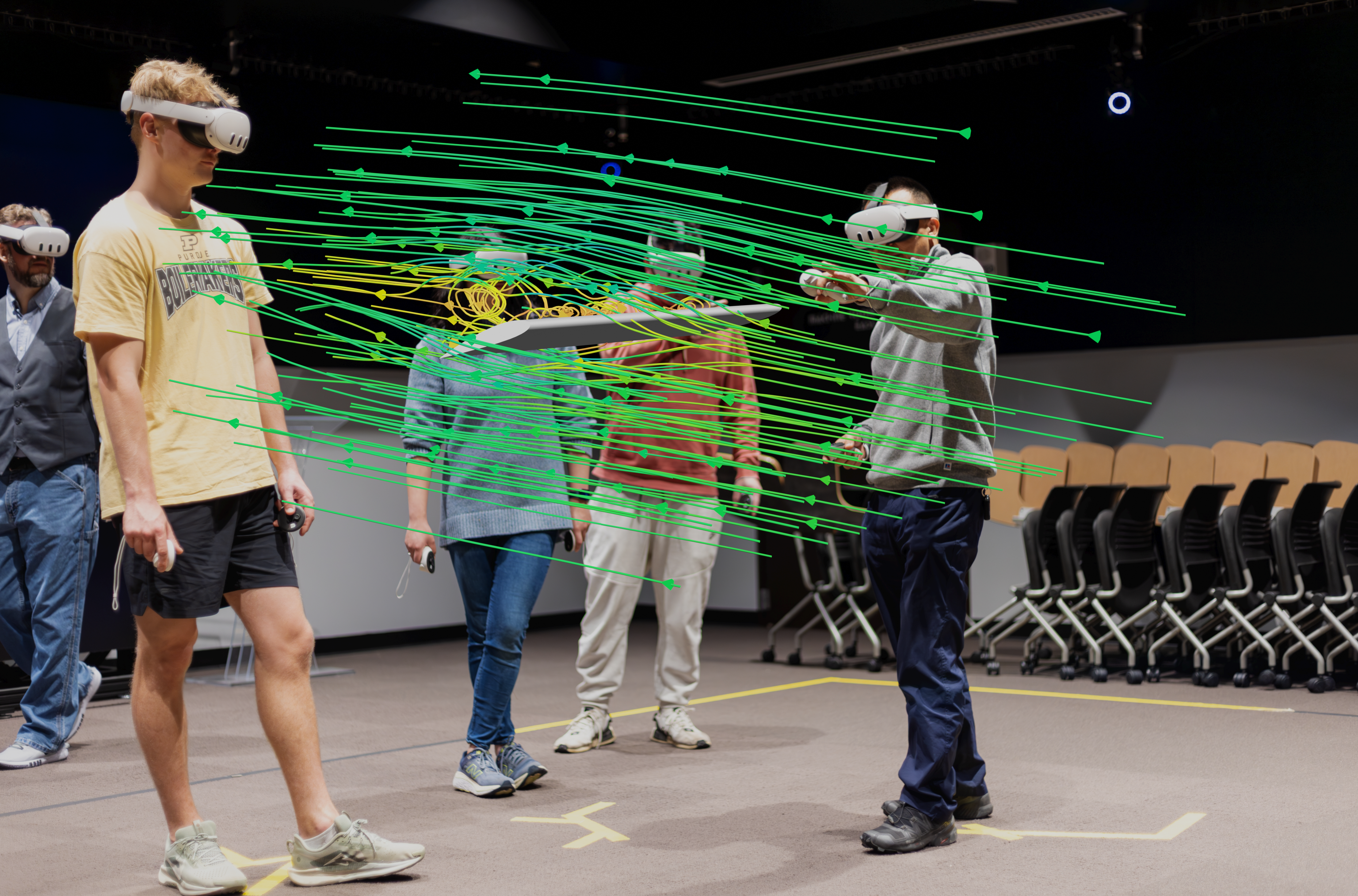 platform is a shared environment that allows anyone in a headset to view and interact with the same virtual content pieces together, viewed in fully virtual (the entire field of vision is virtual, obscuring all of the real environment, and other participants appear as virtual avatars) or passthrough augmented reality (cameras feed the real room and people to the headset view, overlaying virtual content to appear to exist in the same space). Developed in conjunction with Professor Danny Milisavljevic, the CollabXR platform is the first of its kind, merging virtual reality (VR), augmented reality (AR), and mixed reality (MR) capabilities with training, research, and education.
platform is a shared environment that allows anyone in a headset to view and interact with the same virtual content pieces together, viewed in fully virtual (the entire field of vision is virtual, obscuring all of the real environment, and other participants appear as virtual avatars) or passthrough augmented reality (cameras feed the real room and people to the headset view, overlaying virtual content to appear to exist in the same space). Developed in conjunction with Professor Danny Milisavljevic, the CollabXR platform is the first of its kind, merging virtual reality (VR), augmented reality (AR), and mixed reality (MR) capabilities with training, research, and education.
Thanks to support from Purdue University’s Innovation Hub, the EC was able to run a semester-long pilot program to test and explore CollabXR in real-world learning environments. The pilot program initially received 13 project proposals from instructors who wished to use CollabXR in their classrooms. Of these, the EC accepted six project proposals for the Spring 2025 semester. These six projects marked the first large-scale implementation of CollabXR in the classroom.
“Utilizing CollabXR in these different classroom settings was an amazing opportunity for us,” says George Takahashi, Principal Visualization Scientist at the Envision Center. “Not only was the platform a huge success, enabling the professors to relay complex information in a very fun and impactful manner, but we took away lessons that will allow us to improve functionality for future courses.”
The six projects covered 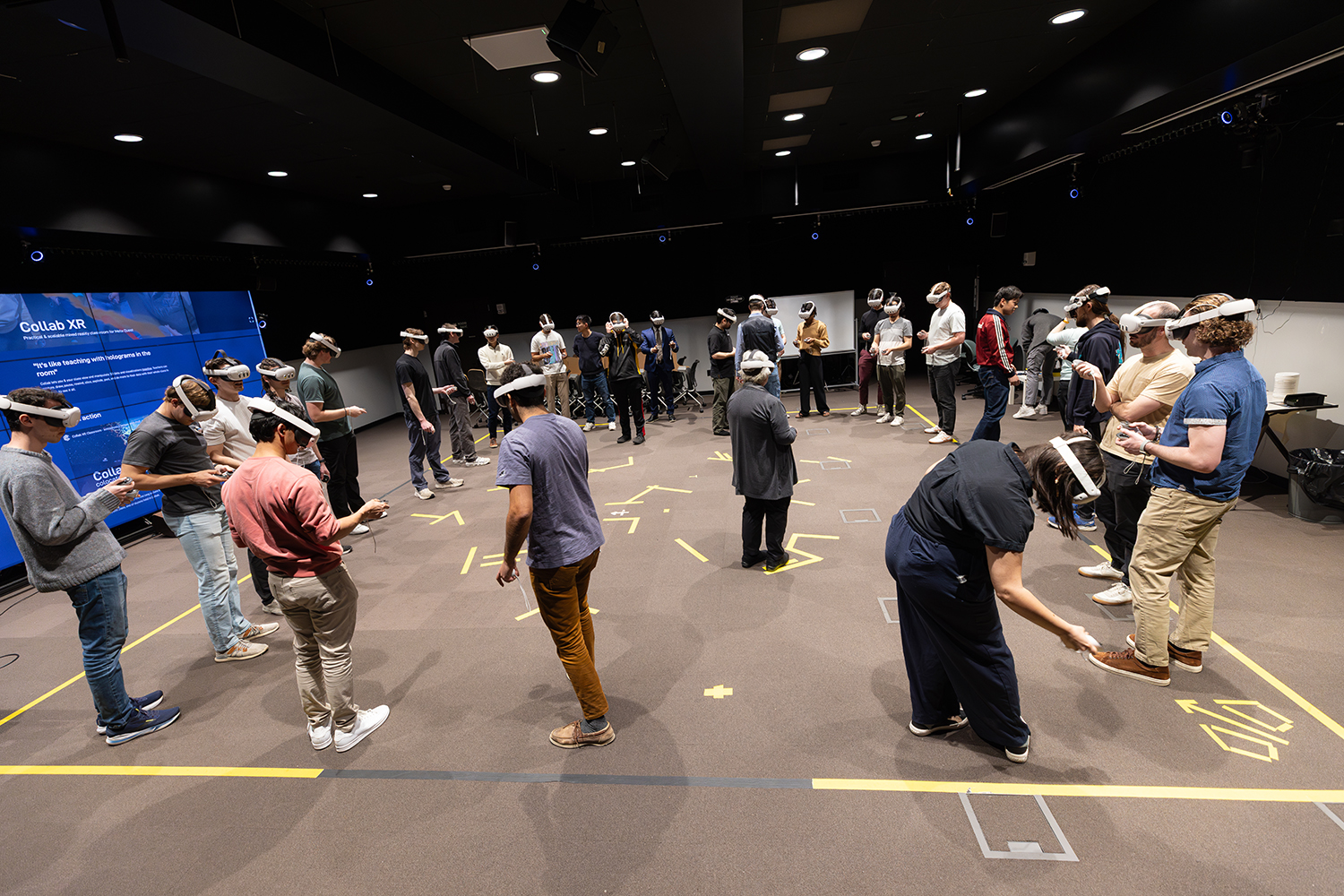 a wide range of domains, from Aeronautics to Nursing to Liberal Arts, and delivered educational experiences to both graduate and undergraduate students. Once the pilot program was completed, over 50 students were directly impacted through the use of CollabXR. Feedback provided by the users (instructors and students alike) after the semester showed that CollabXR was an overwhelming success. The six course instructors who took advantage of CollabXR in their lessons were as follows:
a wide range of domains, from Aeronautics to Nursing to Liberal Arts, and delivered educational experiences to both graduate and undergraduate students. Once the pilot program was completed, over 50 students were directly impacted through the use of CollabXR. Feedback provided by the users (instructors and students alike) after the semester showed that CollabXR was an overwhelming success. The six course instructors who took advantage of CollabXR in their lessons were as follows:
Kenshiro Oguri– Assistant Professor, School of Aeronautics and Astronautics
Oguri utilized the CollabXR platform for his course titled Applied Control in Astronautics (AAE590), which introduces students to the theoretical and practical foundations of control techniques with an emphasis on its application to dynamical systems in astronautics. The primary benefit Oguri was hoping the students would obtain with CollabXR was an improved physical intuition of simulation results. He also believed that CollabXR would enable group discussions where everyone was on the same page, facilitating efficient brainstorming of research ideas. The research data the group examined with CollabXR included spacecraft trajectory displaying orbits, maneuvering thrust, and uncertainty quantification of the spacecraft position as it travels.
“Using the CollabXR platform greatly helps us to gain intuition about three-dimensional orbits, trajectories, and objects (spacecraft, planets, asteroids, etc) in space as well as investigate their details interactively, which is typically very hard to do on papers or computer screens,” says Oguri. “Access and future development with the CollabXR platform would help my students gain intuition about orbital mechanics, space navigation, and mission design much more quickly, which might largely reduce the time for them to acquire necessary understanding to begin their research, and hence greater research accomplishments for the same amount of time spent. It will also make it easier for me to collaborate with other researchers in different fields, which might greatly broaden the scope of collaboration and types of researchers.”
Maxim Lyutikov – Professor, Department of Physics and Astronomy
Lyutikov took advantage of CollabXR to teach an advanced physics research course, PHYS 590. The group already utilizes high-performance computing resources at RCAC to simulate plasma bubbles in 3-dimensions (3D). Before importing their data into the CollabXR platform, visualizing these 3D simulations was difficult, therefore making thorough data comprehension unfeasible. Lyutikov believed that CollabXR would enable him and his students to utilize their data to the fullest to understand interesting and relevant physical phenomena. The group used CollabXR specifically to observe floating plasma bubbles in galaxy clusters, the shapes of the bubbles as they rise, and their trajectory through space.
“There is a clear science value,” says Lyutikov. “Two times I was [immersed in CollabXR], I saw 3D details that were very convincing theory-wise. Any 2D cut would have missed that.” Lyutikov went on to note that CollabXR could also be tremendously useful for showcasing research at conferences or other public presentations, as well as for enhancing journal publications.
Frederick Dunn – Lecturer, College of Liberal Arts
Dunn teaches a course titled Academic and Professional Communication for International Teaching Assistants (SCLA 620). The course is part of Purdue’s Oral English Efficiency Program and is designed to enhance the language, communication, and presentation skills of graduate students whose first language is not English, helping them feel more confident in their roles as teaching assistants. Dunn wanted to incorporate CollabXR into his classroom for a 'Show and Tell' event designed to enhance English language skills through interactive VR. Specifically, CollabXR would enable the students to engage with virtual objects related to their fields of study, allowing them to practice teaching and presenting in English in a low-stakes environment.
“As a language instructor,” says Dunn, “CollabXR enabled me to provide my students with a heightened level of authenticity in their communication practice. For example, one of my students, who presented on tar spot (a corn disease), was able to confidently demonstrate his knowledge without needing to physically walk through a cornfield to point out varying degrees of infection. Instead, he used the virtual environment to illustrate key details, practicing both subject-specific explanations and English communication with a clear, genuine purpose.”
Dunn continues, “As my students come from a wide range of fields, such as agriculture, electrical and computer engineering, aerospace, and veterinary sciences, it's often impractical or even impossible to bring discipline-specific items into a traditional classroom. By integrating CollabXR, students practiced their language skills in scenarios that felt purposeful and domain-specific, fostering deeper engagement and motivation.”
Amy Nagle – Clinical Associate Professor, School of Nursing
Nagle applied to use CollabXR in teaching multiple nursing courses, including NUR 317, NUR 314, and NUR 420. Her intent was to have the Envision Center develop an interactive heart where students could observe blood flow through the vessels, chambers, and valves of the heart, while also listening to the different heart sounds to help them understand what they are hearing. By teaching within the CollabXR platform, Nagle could provide the students with a much more in-depth, hands-on learning experience without the need for cadavers.
“It was great to be able to show students how the heart functioned with a realistic model that I could move around and manipulate,” says Nagle. “I loved being able to draw on the heart, look at different views, and easily toggle between those views. I also liked that the students could interact with it, point at different parts, and ask questions while pointing to what they were talking about. It really brings the anatomy alive and allows those hands-on learners to optimize their learning.”
Jun Chen – Professor, School of Mechanical Engineering
Chen teaches Fluid Mechanics (ME308) to undergraduates in the Mechanical Engineering program at Purdue. Chen wished to incorporate CollabXR into his classroom to showcase flow fields around various objects. For this semester specifically, Chen used CollabXR to provide his students with the opportunity to directly observe a flow field demonstrating the movement and pressure of air around an airfoil in a 3D setting.
“The CollabXR experience [...] demonstrates the great potential of applying advanced technology for teaching and learning,” says Chen. “To the best of my knowledge, this is the first time to show the complicated 3D flow structure—which is very tricky to explain to students in standard lectures—vividly in the eyes of students. The students are amazed to see what they observe and develop an increased interest in learning more about the subject. I am looking forward to working with [the Envision Center] to further develop this capacity to be adopted into our curriculum.”
Kathleen Howell – Hsu Lo Distinguished Professor, School of Aeronautics and Astronautics
Howell wished to incorporate CollabXR into a number of her graduate-level Aeronautics and Astronautics courses, including AAE 532, AAE 632, and AAE 690. According to Howell, processing and designing spacecraft pathways requires geometrical understanding of complex trajectories, and being able to visualize this helps students tremendously with comprehension. Howell used CollabXR in her lessons specifically to show her students visualizations of complex trajectories and orbital dynamics to convey concepts in spacecraft mission planning and analysis.
“It was easy to see how I could create new class demonstrations and interactive lessons for students,” remarked Howell after her first time using the new CollabXR platform. “I think the experience could serve the topic very well, but especially during an interactive lesson that was specifically designed for this environment.” Howell also noted that these types of visualizations and teaching methods may eventually become a requirement as sustainable operations in space become more routine.
Get CollabXR in your classroom
CollabXR aims to take experiential learning to the next level, arming professors with a tool for delivering their course material in a more impactful way, and giving students the opportunity to learn on an accelerated curve. Thanks to the work put in by the development team at the Envision Center, any field or discipline can utilize the CollabXR platform to bring advanced visualization capabilities to the classroom. As long as the instructor has an idea of what they want and the data needed to create the visuals, the Envision Center can get them up and running on the platform in no time.
“We are very excited to have developed our collaborative visualization platform and to have it grow into a functional co-located mixed reality tool,” says Takahashi. “Having the ability to intuitively communicate complex three-dimensional information was originally limited to physical models. Virtual Reality opened the door to bring people together virtually to observe physics-defying large models. By moving to mixed reality and generalizing the models to accommodate data from any domain, this platform brings people together physically and is more scalable and accessible than ever before.”
To get a preview of what the CollabXR platform can do, please visit: https://www.rcac.purdue.edu/envision/xr-lab
If you are interested in getting CollabXR in your classroom, please fill out our Consultation Form.
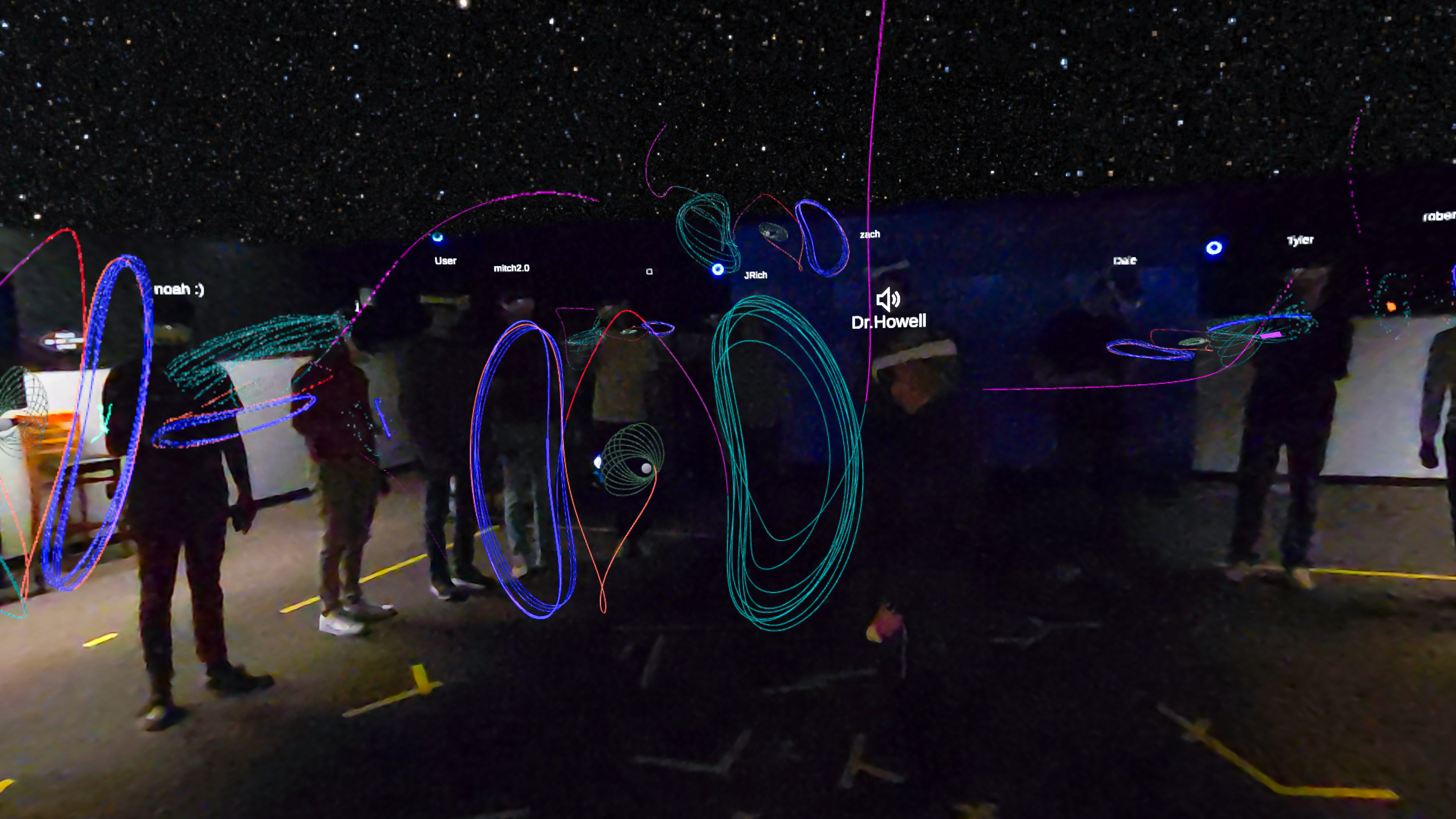
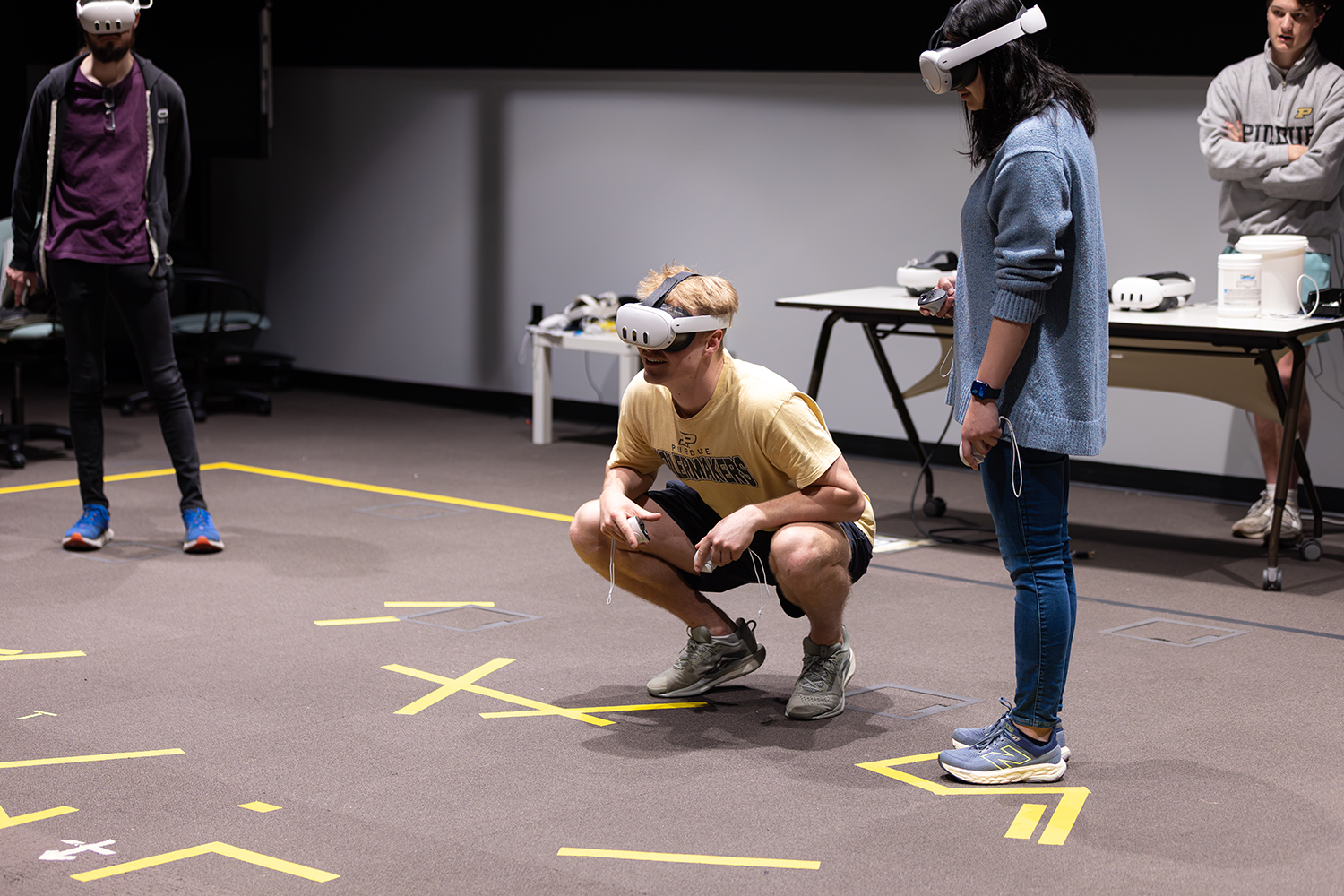
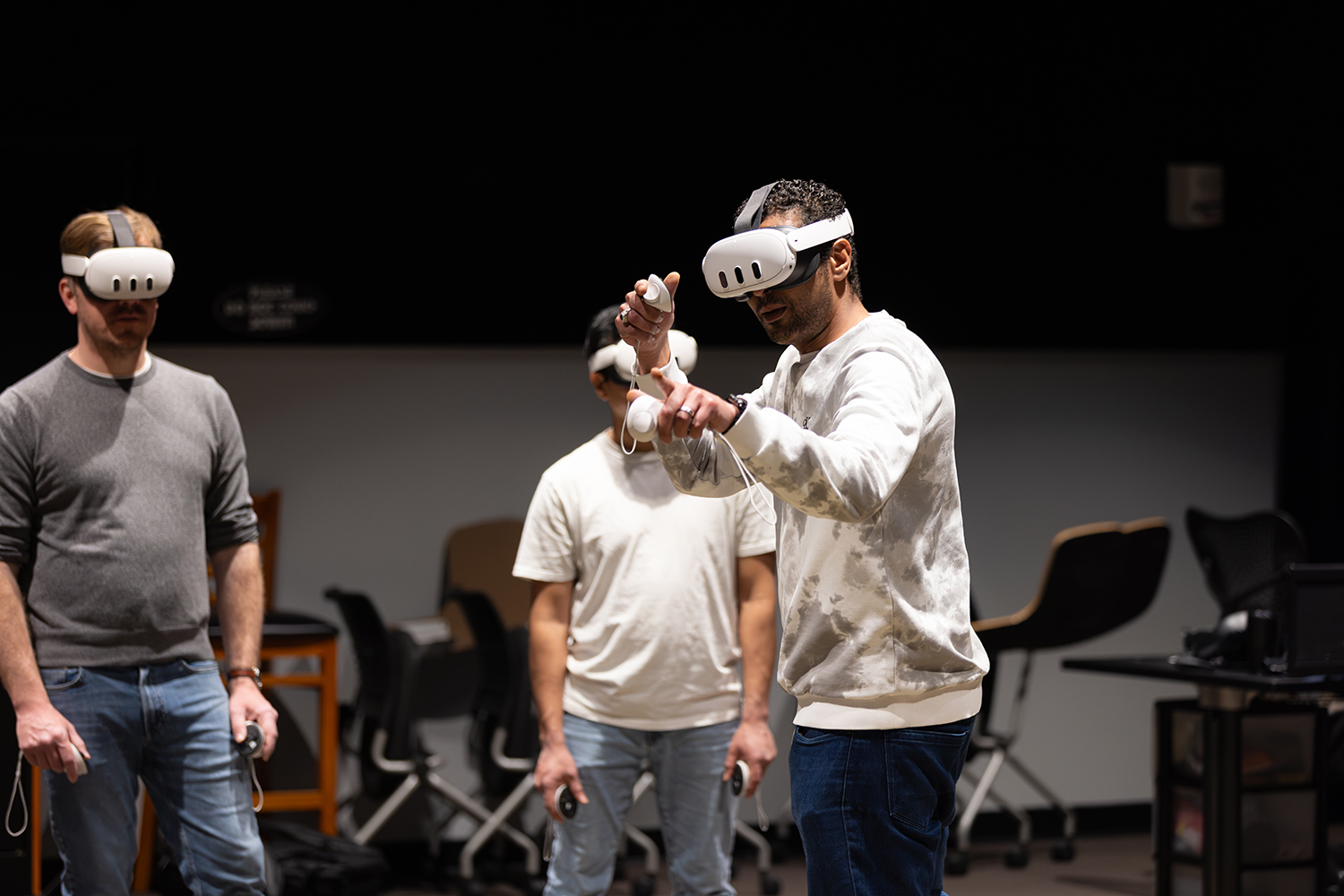
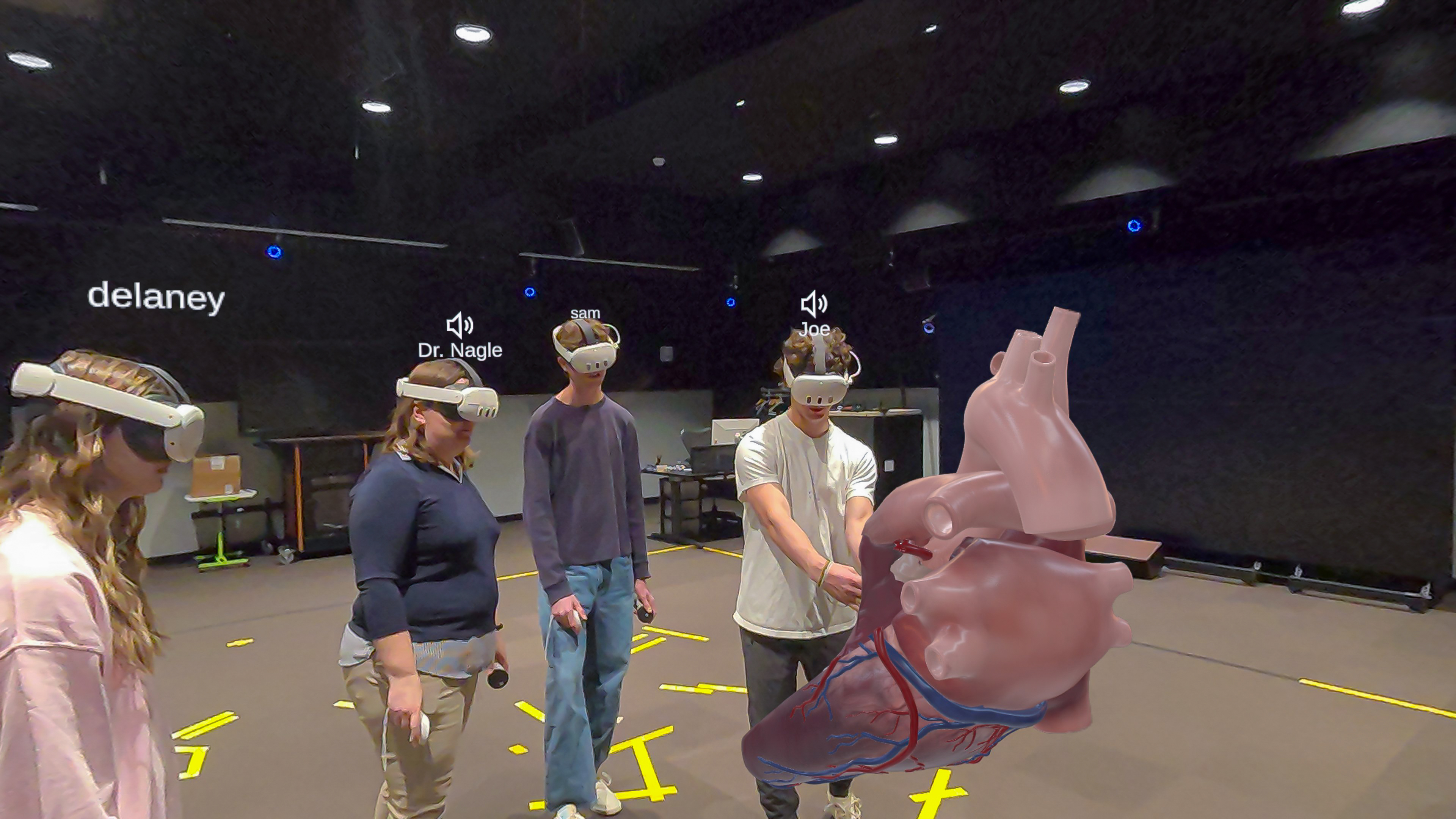
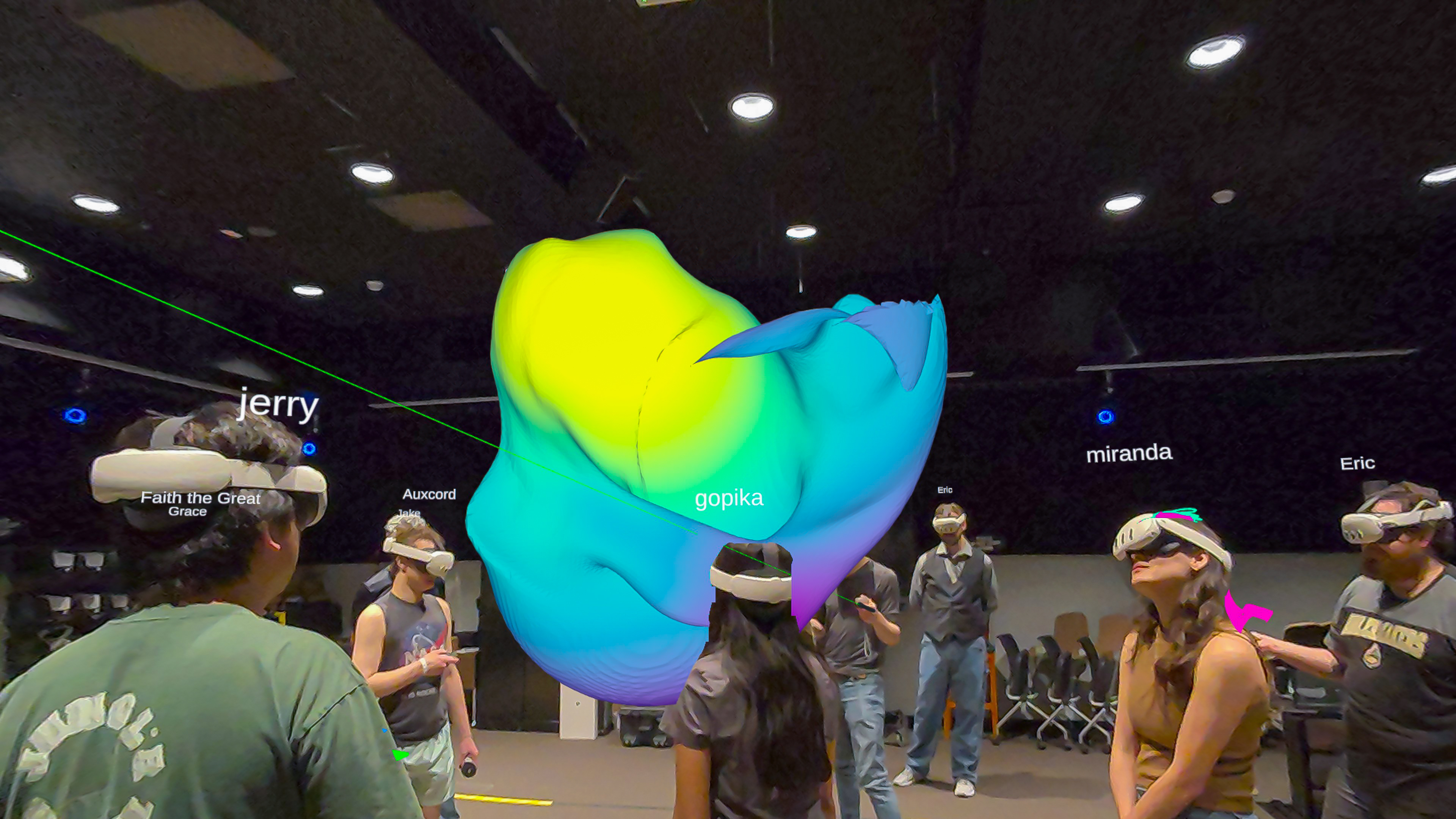
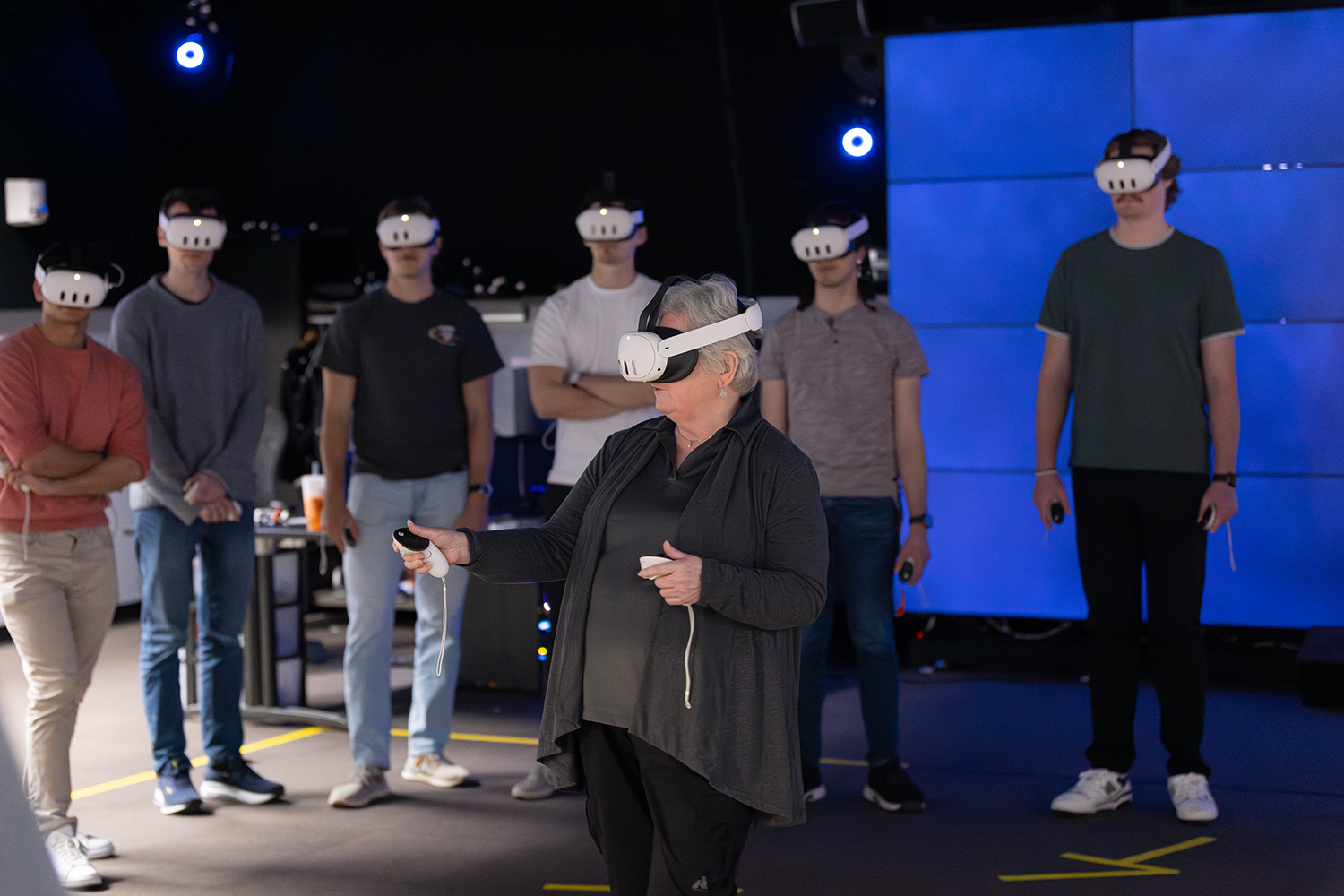
Written by: Jonathan Poole, poole43@purdue.edu
